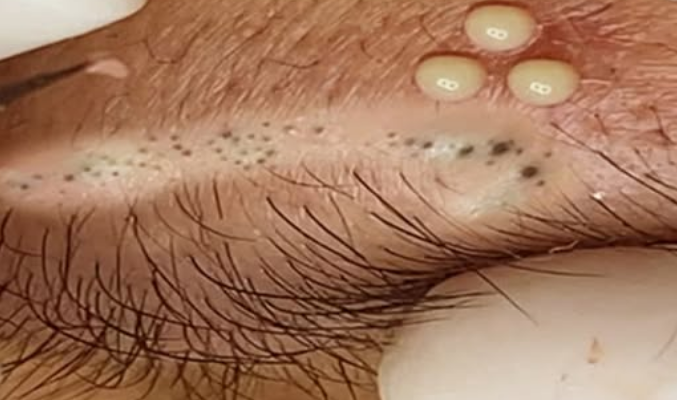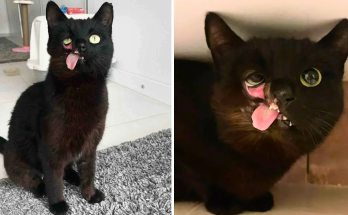
Body acne—commonly referred to as “acne”—is a frustrating and often uncomfortable skin condition that affects millions of people worldwide. While facial acne often gets the most attention, breakouts on the back, chest, and shoulders can be just as persistent—and sometimes even harder to treat.
According to dermatologists, body acne is typically caused by the same factors as facial acne: clogged pores, excess oil, sweat, friction, and bacteria. However, the larger pores and thicker skin on the body can make breakouts deeper and more prone to scarring. The good news is that there are proven methods to manage and prevent body acne effectively.
1. Use a Medicated Body Wash
Body washes containing acne-fighting ingredients like salicylic acid or benzoyl peroxide are highly effective at targeting breakouts. Salicylic acid helps exfoliate dead skin and unclog pores, while benzoyl peroxide kills Cutibacterium acnes bacteria.
💡 Tip: Use a 2% salicylic acid wash daily, or a 5–10% benzoyl peroxide wash 3–4 times per week.
2. Shower After Sweating
Sweat, especially when combined with tight clothing or prolonged activity, can trap bacteria and oil on your skin. This is a common trigger for back and shoulder acne, particularly for athletes or those who wear tight workout gear.
💡 Tip: Shower immediately after workouts and use a gentle exfoliating cloth to cleanse breakout-prone areas.
3. Exfoliate Regularly (But Gently)
Exfoliating helps prevent clogged pores by removing dead skin cells. Use a chemical exfoliant (like glycolic acid) or a gentle scrub 2–3 times per week.
⚠️ Avoid harsh scrubbing tools like loofahs or abrasive brushes—they can irritate the skin and worsen inflammation.
4. Wear Breathable Clothing
Tight, non-breathable clothing (like synthetic gym wear) can trap sweat and bacteria, leading to friction-related acne. This condition, known as acne mechanica, is common in athletes and gym-goers.
💡 Tip: Choose loose, moisture-wicking fabrics and avoid carrying heavy backpacks directly against the skin.
5. Apply Topical Treatments
Spot treatments containing benzoyl peroxide, adapalene (a topical retinoid), or tea tree oil can be applied directly to body breakouts. These reduce inflammation and promote skin turnover.
💡 Tip: Use a gel or spray formula that’s easier to apply to hard-to-reach areas like your back.
6. Try an Oral Medication (If Prescribed)
For persistent or severe body acne, dermatologists may recommend oral antibiotics, hormonal treatments, or even isotretinoin (Accutane).
💊 Note: Oral treatments are typically prescribed when topical methods fail or when acne is widespread and painful.
7. Use Non-Comedogenic Products
Many people overlook the fact that body lotions, sunscreens, and laundry detergents can contribute to clogged pores and breakouts. Always choose non-comedogenic (pore-safe) products.
💡 Tip: Check that your hair conditioner doesn’t contain pore-clogging ingredients like silicones if you let it run down your back in the shower.
8. Keep Your Bedding and Towels Clean
Your bed sheets, pillowcases, and towels collect sweat, oil, and bacteria over time. If not cleaned regularly, they can reintroduce acne triggers to your skin.
🛏️ Tip: Wash sheets weekly and change towels every 2–3 days, especially if you’re prone to sweating.
9. Consider In-Office Treatments
Dermatology clinics offer procedures that can effectively reduce body acne and prevent scarring.
- Chemical peels: Help with pigmentation and clogged pores.
- Laser therapy: Reduces bacteria and inflammation.
- Cortisone injections: Used for large, painful nodules.
💡 These treatments are especially useful for those with deep, cystic acne or post-acne marks on the body.
10. Focus on Overall Wellness
Diet, stress, sleep, and hydration all play a role in skin health. A nutrient-rich diet with zinc, omega-3s, and vitamin A supports healthy skin function.
🥗 Tip: Reduce processed sugars and dairy if you’re sensitive to dietary acne triggers, and manage stress through exercise, mindfulness, or therapy.
The Emotional Impact of Body Acne
While body acne is often hidden under clothing, it can take a serious toll on confidence, self-esteem, and mental health. For many people, it prevents them from wearing certain clothes or participating in social activities like swimming or gym classes.
“I used to avoid any event that involved wearing a swimsuit,” says 24-year-old Sara Bennett, who struggled with back acne throughout college. “I didn’t realize how much it affected my daily life until I started treatment and saw results.”
Conclusion: Clear Skin Is Achievable
Treating body acne takes time, but with consistent care and a comprehensive approach, clearer skin is within reach. From using medicated washes to adjusting lifestyle habits and seeking medical advice when needed, you have options—effective ones.
Dermatologists emphasize that you should never feel ashamed or defeated by body acne. “It’s extremely common,” says Dr. Joshua Mendez, a board-certified dermatologist in Miami. “The key is early treatment and patience. The skin will respond—you just have to give it the right tools.”


